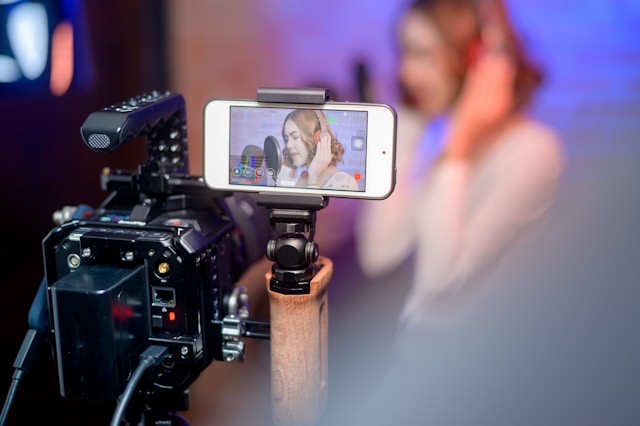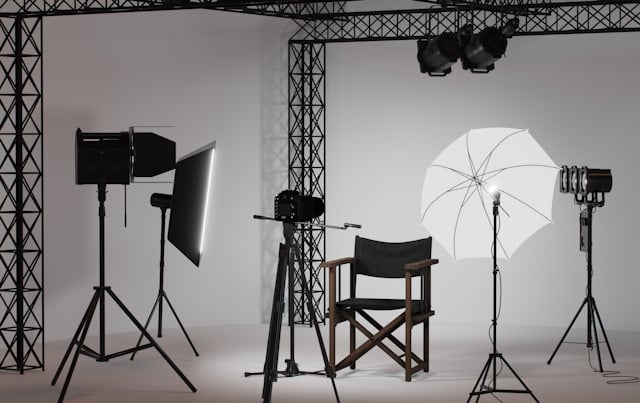In 2025, the line between brand and consumer is more blurred than ever. Today, consumers, employees, and fans aren’t just audiences; they’re video co-creators. User-generated content (UGC) has become not just popular but also necessary as a result of this power shift.
Why? Because UGC is real. It’s unfiltered, emotionally resonant, and deeply trustworthy. Whether it’s a heartfelt testimonial, a product review, or a creative challenge, UGC delivers the kind of authenticity that polished ads often lack.
But gathering random video isn’t enough to effectively use UGC. You need structure, purpose, and the right tools to turn raw content into compelling video that converts. Platforms like BrandLens simplify UGC video collection and editing, offering end-to-end solutions that guide creators and ensure content quality.
This guide walks you through the best practices for creating video content with user-generated materials that resonate, engage, and perform.
1. Start with a Strategy, Not Just a Submission Form
Too often, brands rush into UGC campaigns with nothing but a form and a hope. You need a plan to get content that is relevant and consistent with your brand.
Define Your Campaign Objectives:
- Awareness: Are you looking to amplify your reach?
- Social Proof: Do you want to show real people using your product?
- Education: Is this about sharing tips or onboarding?
- Lead Generation: Are you aiming to collect emails or drive traffic?
Identify Your Contributors:
- Customers with real experiences
- Employees with internal perspectives
- Influencers or ambassadors with reach
- Fans who are already talking about you
Create a Collection Brief:
Theme:
What should people talk about? Examples can include:
- “My first experience with Brand X and why I loved it.” (Focus on initial reactions and positive sentiment)
- “Show us how you use [Product Name] in your daily routine.” (Highlights product integration and utility)
- “Share your favorite [Brand Y] memory or moment.” (Evokes emotional connection and nostalgia)
- “Tips and tricks for using [Service Z] to achieve your goals.” (Positions the brand as a solution provider)
Format:
The format helps you make sure that you don’t have to go for cropping or editing details for sharing your video on different platforms.
Vertical (e.g., Reels, TikTok, YouTube Shorts):
- Typically shot in a 9:16 aspect ratio.
- Ideal for short, engaging, and mobile-first content.
- Frequently includes on-screen text, trending sounds, and quick cuts.
Horizontal (e.g., YouTube videos, long-form blogs):
- Standard 16:9 aspect ratio.
- Suitable for more in-depth reviews, tutorials, vlogs, or storytelling.
- Allows for more detailed explanations and demonstrations.
Square (e.g., Meta posts, Instagram feed):
- Often 1:1 aspect ratio, though 4:5 is also common on Instagram.
- Versatile for static images, short video clips, or carousels.
- Great for visually impactful content that grabs attention in a feed.
Tone:
Lastly, you must decide what feeling you wish to convey through your video. How should the content feel?
- Emotional
- Fun
- Informative
- Inspirational
This may help you cerate authentic user-generated content while also resonating with your audience.
Have a UGC Content Calendar:
Why UGC content calendars matter:
- Organization: Plan ahead to avoid scrambling.
- Increased Engagement: Use prompts to keep content interesting.
- Consistency: Stay on schedule and maintain a steady flow of content.
To build UGC content calendars:
- Match Goals: Align with overall marketing campaigns.
- Set Frequency: How often will you post UGC?
- Choose Platforms: Where will it live?
- Schedule Themes: Assign topics to dates.
- Plan “Ask” Dates: When will you request content?
- Allow Review Time: Factor in selection and approval.
- Map Publication: When does it go live?
- Track Performance: Remember to measure results.
Platforms like BrandLens guide contributors with interactive prompts and structure. Unlike static forms, BrandLens uses timed transitions and step-by-step scene builders to help participants capture share-worthy stories.
Want more insight into rights and quality management? Check out our blog about the tips for managing content rights and quality in UGC campaigns.
2. Give Structure with Prompts, Not Scripts
You don’t need to hand people a script. You must provide them with direction and clarity.
Use Guided Prompts to Spark Storytelling:
- “What problem did our product solve for you?”
- “What surprised you the most?”
- “What would you tell a friend about us?”
Break Submissions into Segments:
- Introduction: Who are you?
- Problem: What challenge were you facing?
- Solution: How did the brand/product help?
- Result: What happened after?
BrandLens supports guiding creators through on-brand, high-converting video prompts, enabling everyone to tell great stories. Its features like timed transitions and sequential prompts allow contributors to focus on their message without the anxiety of “getting it perfect.”
As shown in the Hershey’s Kisses campaign, even a simple gifting moment turned into a powerful storytelling opportunity when customers were guided to record personal messages attached to their chocolate gifts.
Discover how to use real video reviews to increase conversion and trust.
3. Edit with Authenticity in Mind
UGC’s power lies in its realism. The goal isn’t to polish it beyond recognition; it’s to shape it without losing its soul. To understand why this matters, read our blog on the psychology behind why authentic video content performs better and why brands are embracing the power of lo-fi, unfiltered user storytelling.
Tips for Authentic Editing:
- Preserve natural pacing, tone, and emotion
- Avoid over-produced transitions and effects
- Highlight real expressions, pauses, even imperfections
Subtle Branding Enhancements:
- Add a clean intro/outro with your logo
- Use consistent lower-third graphics (name, title, location)
- Caption for accessibility and engagement
- Overlay light music or a simple CTA (e.g., “Try it today”)
Format Matters:
- Most UGC today is mobile-native. Stick to vertical (9:16) formats.
- Optimize for sound-off viewing with captions
- Keep lighting and audio natural, but clean
BrandLens helps with AI moderation in video UGC production, tagging clips, and organizing video libraries, so you spend less time sorting and more time crafting.
4. Repurpose UGC Across Channels
A single video submission can be the seed for an entire content campaign. UGC is one of the most versatile formats if you know how to slice and distribute it.
How to Repurpose:
- Cut long clips into 15s Reels or TikToks
- Compile multiple testimonials into a highlight reel
- Use a single quote as a graphic on Instagram or LinkedIn
- Add a video testimonial to your email header
- Integrate UGC into YouTube shorts and Reels
- Include in event recap montages
Where to Use UGC:
- Product pages (to boost conversion)
- Landing pages (to increase trust)
- Email campaigns (to spark emotion)
- Paid ads (to drive clicks and return on ad spends)
- Sales presentations (to close leads)
- Live events (fan walls, opening visuals)
This is where BrandLens shines, transforming customer videos into compelling marketing assets and launching co-created content at live events and activations like never before.
One standout: Mr. Tortilla used BrandLens to collect real customer clips for social campaigns, turning everyday buyers into brand stars. The result? A viral moment with thousands of organic shares and comment engagement.
In 2025, the best video content doesn’t come from your agency or studio. It comes from your fans, your customers, your people. When you invite users to co-create and provide the right structure, the result is not just content. It’s a community.
BrandLens makes it easy to collect, edit, and scale UGC across platforms. From TikTok-style galleries to AI-assisted moderation and multi-language campaigns, BrandLens turns raw video into a polished asset pipeline.
Ready to make your next campaign more real, more human, and more powerful? Request a Demo and explore how BrandLens can help.







